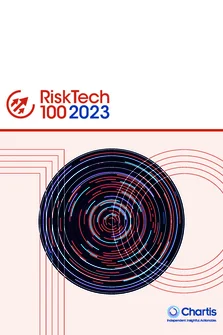Achieving Effective IFRS 17 Reporting
In this report, created in collaboration with Workiva, we focus on the challenges associated with IFRS 17 reporting, and consider solutions to those challenges from the perspectives of accounting policy and technology implementation. And in highlighting the reporting stage of IFRS 17 compliance, we focus specifically on how decisions about the presentation of data can dictate the character of final disclosure.
As a principles-based standard, IFRS 17 provides room for different interpretations, meaning that insurers have choices to make about how to comply. The explicit integration of financial and non-financial risk has caused much discussion about the unprecedented and distinctive modeling challenges that IFRS 17 presents. These could cause ‘tunnel vision’ among insurers when it comes to how they approach compliance.
But all stages of IFRS 17 compliance are important, and each raises distinct challenges. By focusing their efforts on any one aspect of the full compliance value chain, insurers can risk failing to adequately comply. In the case of IFRS 17, it is not necessarily accidental non-compliance that is at stake, but rather the sub-optimal presentation of the business’ profits. To achieve ‘ideal’ compliance, firms need to focus on the logistics of reporting as much as on the mechanics of modeling.
Effective and efficient reporting comprises two elements: presentation and disclosure. Reporting is the culmination of the entire compliance value chain, and decisions made further up the chain can have a significant impact on the way that value is
presented. Good reporting is achieved through a mixture of technology and accounting policy, and firms should follow several strategies in achieving this.
In this report we focus on the challenges associated with IFRS 17 reporting, and consider solutions to those challenges from the perspectives of accounting policy and technology implementation. And in highlighting the reporting stage of IFRS 17 compliance, we focus specifically on how decisions about the presentation of data can dictate the character of final disclosure
Only users who have a paid subscription or are part of a corporate subscription are able to print or copy content.
To access these options, along with all other subscription benefits, please contact info@risk.net or view our subscription options here: http://subscriptions.risk.net/subscribe
You are currently unable to print this content. Please contact info@chartis-research.com to find out more.
You are currently unable to copy this content. Please contact info@chartis-research.com to find out more.
Copyright Infopro Digital Limited. All rights reserved.
As outlined in our terms and conditions, https://www.infopro-digital.com/terms-and-conditions/subscriptions/ (point 2.4), printing is limited to a single copy.
If you would like to purchase additional rights please email info@chartis-research.com
Copyright Infopro Digital Limited. All rights reserved.
You may share this content using our article tools. As outlined in our terms and conditions, https://www.infopro-digital.com/terms-and-conditions/subscriptions/ (clause 2.4), an Authorised User may only make one copy of the materials for their own personal use. You must also comply with the restrictions in clause 2.5.
If you would like to purchase additional rights please email info@chartis-research.com






